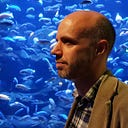‘The Exotic Ones’ or — Crazier Than ‘King Kong’ AND ‘Showgirls’ Combined?!
SCENE — CRAZY, DELIRIOUSLY UPBEAT JAZZ PLAYS OVER FURIOUS MONTAGE FOOTAGE OF NEW ORLEANS
NARRATOR — “This is New Orleans, the Crescent City, Paris of America. It squats in the middle of the Mississippi mud with the levees of the Nineteenth Century myth on one side, the dykes of modern industrialism on the other. And the old French Quarter, bright-eyed and exciting, ornamenting the city’s beginning. Tourists still gasp at its enchanting courtyards and horse-drawn carriages like those Andrew Jackson and Jean Lafitte, the pirate, might have used for transportation. St Louis Cathedral, erected in 1724, sits directly across from Jackson Square. The Cabildo, built in 1795. On December 20th, 1803, the Louisiana Purchase was executed here. The French Market Coffee Shop is an offspring of the old French Market which started back in the year 1720. But, once each year, thousands of tourists pour in to New Orleans by whatever means available to them, to witness or take part in Mardi Gras. But if you check history deep enough you will find it was born out of a religious cause. But all that has been forgotten now because Mardi Gras is a time of reckless abandonment, or merriment.
Vieus Carré, the Crescent City. Sleepy by day, psychedelic by night. Some call New Orleans the birthplace of the blues, being nurtured on a street they call Bourbon, like one of the many drinks that can be had there if your pocket is filled with the right kind of coin. But Bourbon Street never really comes alive until after dark. Bourdon Street is also known as the birthplace of the “exotic”, better known to the tourist trade as the “stripper”, where hundreds of these girls perform their trade to the delight of the paying customers in dozens of the city’s well-known nightclubs.
But our story doesn’t begin on Bourbon Street. Instead, it begins in the swamps of Louisiana.”
CUT TO — a man boating on the Okefenoke Swamp where he is brutally killed by a giant swamp monster before we CUT TO a close-up of a newspaper blaring a headline in capital letters — SWAMP MONSTER STRIKES AGAIN CLAIMS ANOTHER VICTIM. The newspaper is then lowered to reveal a garishly-lit stage and a stripper twirling her flaming nipple tassels directly at the camera.
However, this nightclub is struggling financially so the proprietor has an idea — why not capture the swamp monster and make him part of the act? After all, if you put a ravenous, murderous beast up on stage with a load of semi-naked women then what can possibly go wrong?
‘The Exotic Ones’ (1968) perfectly encapsulates everything that’s wild and delirious about the films of the Ormond Family (although I’ve yet to watch their religious movies which I’ve heard are even crazier) — exploitation, oddly chaste sleaze, lurid colours, shocking violence, Sixties Americana, wall-to-wall music and an approach to filmmaking I can only describe as “euphorically demented”. And any film where the lead actor’s name is ‘Sleepy La Beef’ turns out to be the LEAST crazy thing about the movie then you know you’re watching something truly special.
Yet despite all the monster-carnage potential what’s most intriguing about ‘The Exotic Ones’ are the scenes in the burlesque club with director Ron Ormond indulging in an activity he obviously adores and that’s lovingly filming various musical and dancing acts meaning the bulk of the movie consists of a whole host of entertainers delivering some incredibly compelling and impressive performances (and any film that climaxes in a berserk rendition of Ponchielli’s ‘Dance of the Hours’ for tremolo and bass harmonica has to be seen to be believed).
Not that there isn’t grisly violence for those with a taste for such bloody fruits so if you ever wanted to see a man get his arm ripped-off and beaten to death with it then this’ll satiate that particular urge (although the moment when the swamp monster rips the head off a live chicken with his bare teeth was, for me, unforgivable).
‘The Exotic Ones’ is typical Ormond Family entertainment in that it’s like being pumped full of morphine and having the films of Kenneth Anger, John Waters and Rainer Fassbinder projected into your eyeballs simultaneously. It’s impossible to look away from and, not only that, but the music is frequently outstanding, often sounding like ‘Diamonds are Forever’ (1971) period John Barry but injected with so much sleaziod energy it could choke a horse (in fact, I wouldn’t be surprised if that was one of the Ormond’s acts).
Essential viewing for perverts, freak heads and fans of giant harmonicas.
